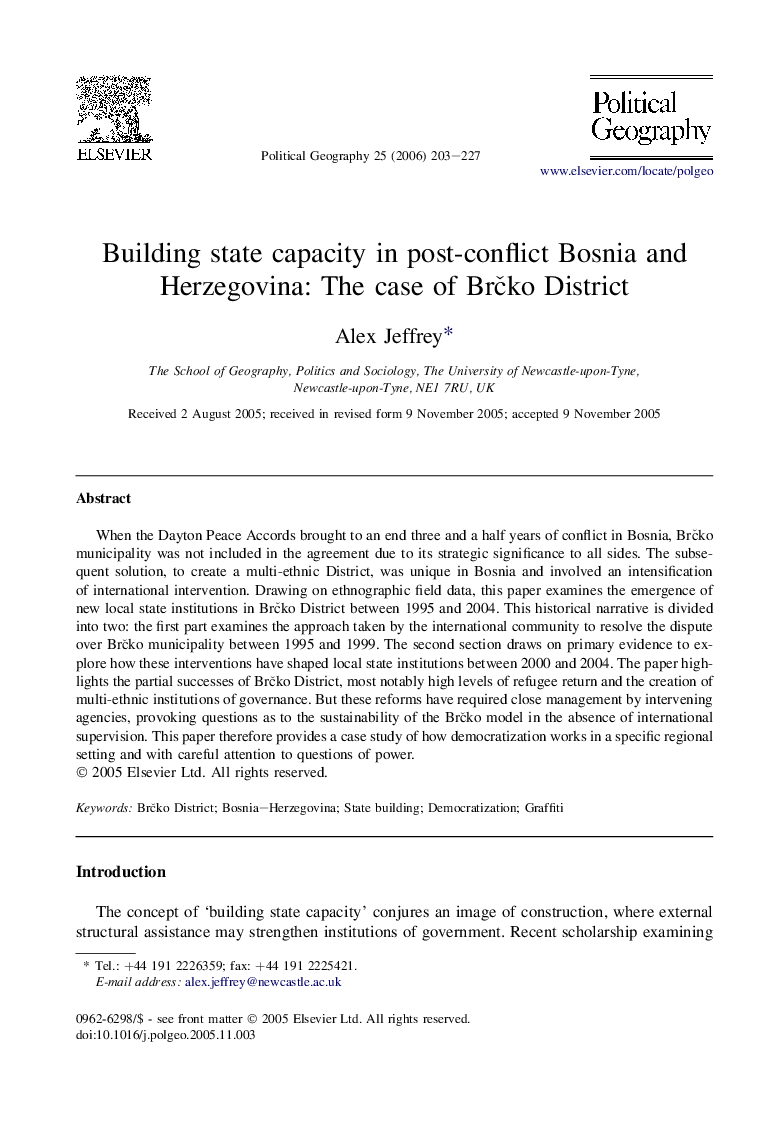| Article ID | Journal | Published Year | Pages | File Type |
|---|---|---|---|---|
| 1062610 | Political Geography | 2006 | 25 Pages |
When the Dayton Peace Accords brought to an end three and a half years of conflict in Bosnia, Brčko municipality was not included in the agreement due to its strategic significance to all sides. The subsequent solution, to create a multi-ethnic District, was unique in Bosnia and involved an intensification of international intervention. Drawing on ethnographic field data, this paper examines the emergence of new local state institutions in Brčko District between 1995 and 2004. This historical narrative is divided into two: the first part examines the approach taken by the international community to resolve the dispute over Brčko municipality between 1995 and 1999. The second section draws on primary evidence to explore how these interventions have shaped local state institutions between 2000 and 2004. The paper highlights the partial successes of Brčko District, most notably high levels of refugee return and the creation of multi-ethnic institutions of governance. But these reforms have required close management by intervening agencies, provoking questions as to the sustainability of the Brčko model in the absence of international supervision. This paper therefore provides a case study of how democratization works in a specific regional setting and with careful attention to questions of power.
